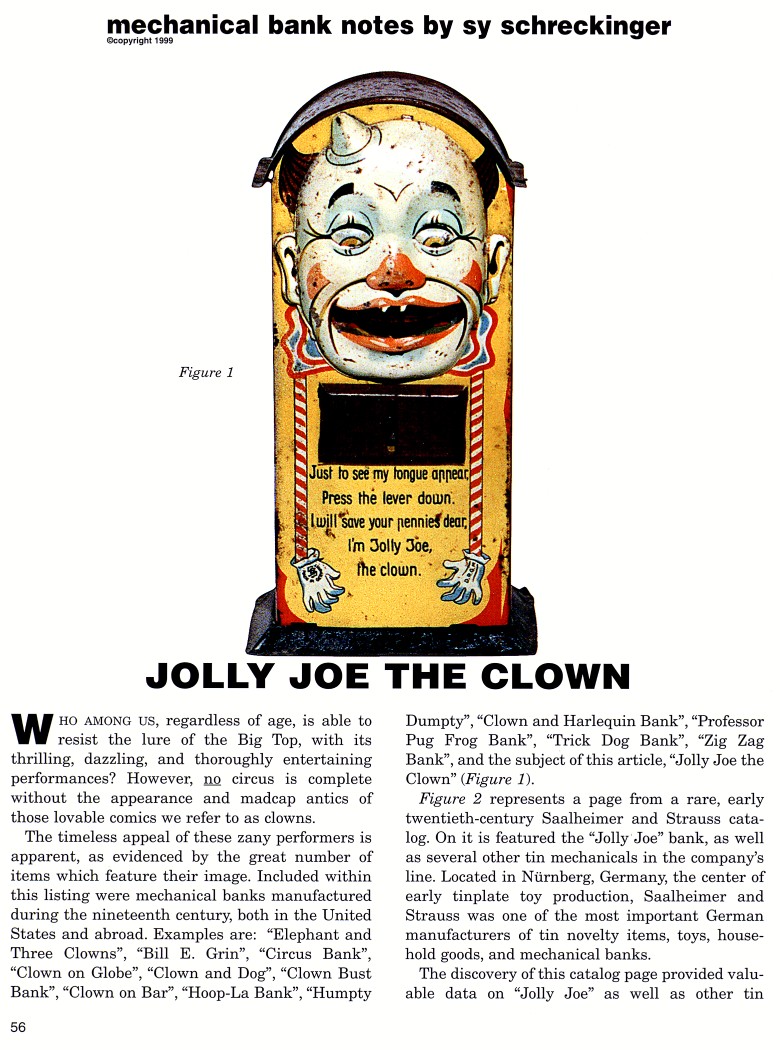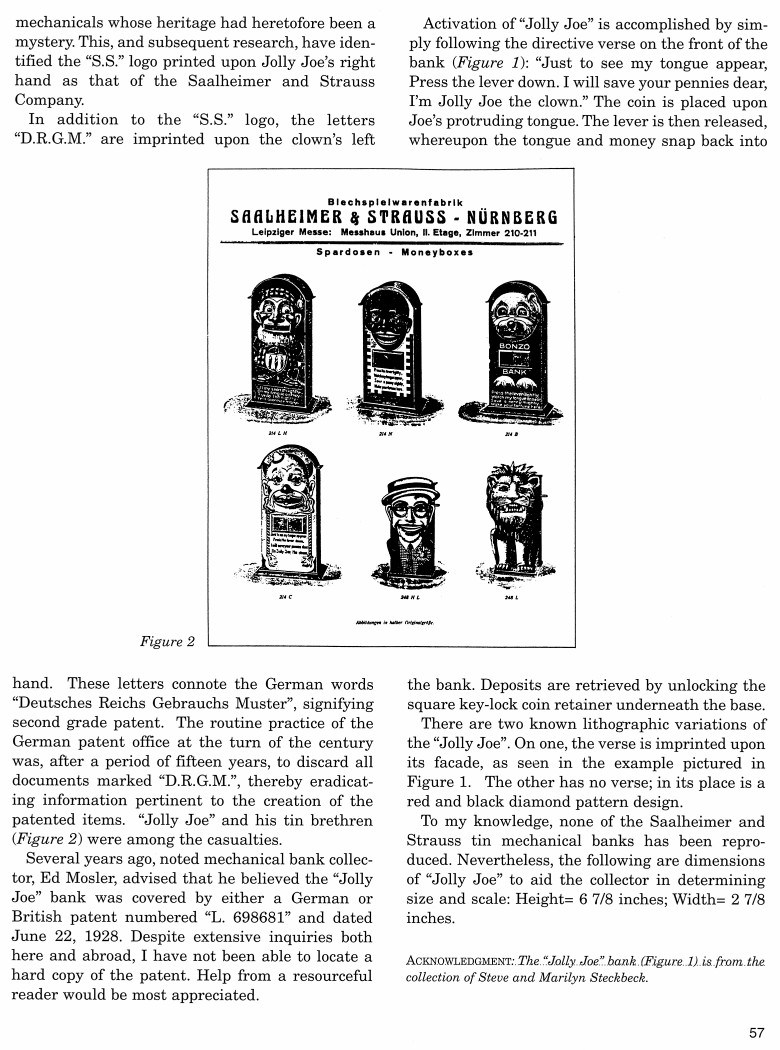|
Jolly Joe The Clown
by Sy Schreckinger – ANTIQUE TOY WORLD Magazine – November,
1999
Who among us, regardless of age, is able to
resist the lure of the Big Top, with its thrilling, dazzling, and
thoroughly entertaining performances? However, no circus is complete
without the appearance and madcap antics of those lovable comics we refer
to as clowns. The timeless appeal of these zany performers is apparent, as
evidenced by the great number of items which feature their image. Included
within this listing were mechanical banks manufactured during the
nineteenth century, both in the United States and abroad. Examples are:
"Elephant and Three Clowns", "Bill E. Grin", "Circus Bank", "Clown on
Globe", "Clown and Dog", "Clown Bust Bank", "Clown on Bar", "Hoop-La
Bank", "Humpty Dumpty", "Clown and Harlequin Bank", "Professor Pug Frog
Bank", "Trick Dog Bank", "Zig Zag Bank", and the subject of this article,
"Jolly Joe the Clown" (Figure 1).
Figure 2 represents a page from a rare, early twentieth-century
Saalheimer and Strauss catalog. On it is featured the "Jolly Joe" bank, as
well as several other tin mechanicals in the company's line. Located in
Nurnberg, Germany, the center of early tinplate toy production, Saalheimer
and Strauss was one of the most important German manufacturers of tin
novelty items, toys, household goods, and mechanical banks.
The discovery of this catalog page provided valuable data on "Jolly
Joe" as well as other tin mechanicals whose heritage had heretofore been a
mystery. This, and subsequent research, have identified the "S.S." logo
printed upon Jolly Joe's right hand as that of the Saalheimer and Strauss
Company.
In addition to the "S.S." logo, the letters "D.R.G.M." are imprinted
upon the clown's left hand. These letters connote the German words "Deutsches
Reichs Gebrauchs Muster", signifying second grade patent. The routine
practice of the German patent office at the turn of the century was, after
a period of fifteen years, to discard all documents marked "D.R.G.M.",
thereby eradicating information pertinent to the creation of the patented
items. "Jolly Joe" and his tin brethren (Figure 2) were among the
casualties.
Several years ago, noted mechanical bank collector, Ed Mosler,
advised that he believed the "Jolly Joe" bank was covered by either a
German or British patent numbered "L. 698681" and dated June 22, 1928.
Despite extensive inquiries both here and abroad, I have not been able to
locate a hard copy of the patent. Help from a resourceful reader would be
most appreciated.
Activation of "Jolly Joe" is accomplished by simply following the
directive verse on the front of the bank (Figure 1): "Just to see my
tongue appear, Press the lever down. I will save your pennies dear, I'm
Jolly Joe the clown." The coin is placed upon Joe's protruding tongue. The
lever is then released, whereupon the tongue and money snap back into the
bank. Deposits are retrieved by unlocking the square key-lock coin
retainer underneath the base.
There are two known lithographic variations of the "Jolly Joe". On
one, the verse is imprinted upon its facade, as seen in the example
pictured in Figure 1. The other has no verse; in its place is a red and
black diamond pattern design.
To my knowledge, none of the Saalheimer and Strauss tin mechanical
banks has been reproduced. Nevertheless, the following are dimensions of
"Jolly Joe" to aid the collector in determining size and scale: Height =
6-7/8 inches; Width = 2-7/8 inches.
ACKNOWLEDGMENT: The Jolly Joe Bank. (Figure 1) is from
the collection of Steve and Marilyn Steckbeck.
|


